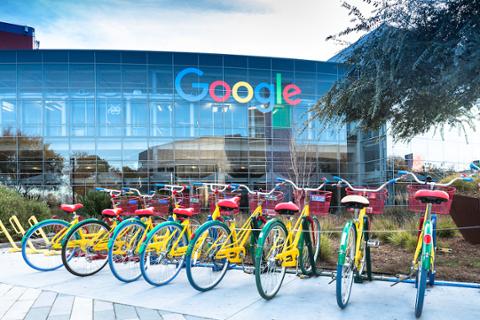When employees return to Google’s offices, they’ll find a radically altered workplace, complete with movable walls and meeting spaces designed to serve both in-person and remote employees.
The New York Times has an extensive rundown of these workplace adjustments, which are designed to not only keep workers safe while the COVID-19 pandemic takes its course, but also pioneer new ways of office work. It’s yet another sign that the past year has accelerated some long-simmering trends around remote work and the modern workplace.
While not all technologists have the desire to work at Google, it’s always worth keeping an eye on what the search-engine giant does, if only because other companies tend to adopt some version of its policies. In this case, however, some companies might balk at some of Google’s latest office innovations, which include a robot that can inflate a balloon wall around employees who want a more private meeting amidst open office space.
Google’s other office alterations focus on flexible space: movable walls and equipment, meeting pods with video screens placed at eye level so that remote workers feel like they’re part of the in-person group, and “hot desks” that automatically adjust to individual preferences. The future of Google’s office is open space and hybrid workers who can adjust their space as they see fit whenever they actually come in.
Meanwhile, Google also plans on suspending many of its famous in-office amenities until the COVID-19 pandemic is well behind us. For example, the company’s free shuttle service, fitness centers, and other communal spaces will remain closed; the cafeterias will shift to grab-and-go meals.
Will Google employees like these changes? That’s a big question. Alphabet/Google CEO Sundar Pichai has been careful to frame Google’s current interest in hybridized and flexible work as an experiment. That’s a wise position in case he needs to roll some policies back; while technologists have indicated, in survey after survey, their preference for a hybrid schedule, numerous studies over the years have suggested they hate the concept of an open office.
Long before the pandemic, companies tried to make the open office a little more palatable with features such as “privacy pods,” phone booths, and tiny spaces for private work that employees could reserve. Panasonic even produced a concept called the “Wear Space,” a curved panel that workers strapped to their heads to block their peripheral vision; the company claimed that would help employees concentrate better in an open space, but critics mocked it as the human version of horse blinders. None of that stopped technologists’ complaints that everything about the open office—from noise levels to a lack of meeting and productivity spaces—prevented them from concentrating on their work.
The COVID-19 pandemic, by forcing nearly everyone to work from home for more than a year, put that debate over the open office on hold. Now that things are opening up again, though, companies will need to decide what their “future of the office” actually looks like. In Google’s case, it means creating the most open office possible, with a few concessions to those who need to lock down without distraction for hours at a time. Will Googlers actually go for it?



